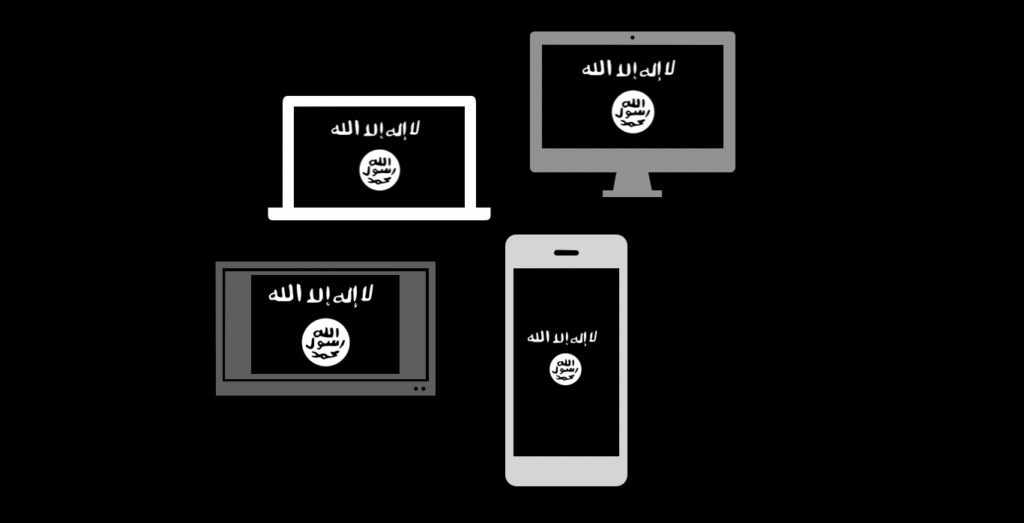
ISIS has recently reappeared in breaking news headlines following the April 21, 2019 Sri Lanka attacks, which killed approximately 257 people. Kareem El Damanhoury, PhD, from Georgia State University, visited the University of Denver to give a talk about conceptualizing the ISIS phenomenon and analyzing its relation to media.
El Damanhoury, originally from Egypt, is an academic and journalist whose research focuses on the use of media in times of conflict, political communication, and the visual framing and propaganda of militant organizations. He states that ISIS embodies a very sophisticated media structure.
For almost 1,300 years, the “caliphate” had been the polity of the Muslims; however, since 1924, there has not been such an entity in place. Before the 9/11 attacks, there was a re-emergence of the caliphate in Afghanistan and Pakistan with the rise of Al Qaida. During that time, Al Qaida organized a structure in which media organizations acted as their affiliates. ISIS was originally an affiliate of Al Qaida in Iraq and then separated; however, even though they did not have any territory or ability to govern on their own, they soon declared statehood. In 2015, they gained power and expanded, declaring themselves as an Islamic state.
Central media organizations and producers around the world, that create content for ISIS, have adopted the use of visual media as a primary source of propaganda and promotion, such as magazines and social media which include images and videos. El Damanhoury analyzed 3,500 images from various newsletters in which ISIS portrayed itself as a caliphate state, more like an “imaged caliphate” or virtual state.
El Damanhoury said that they uses a segmentation strategy where there was a global network that reached people through publications with different languages, to reach a larger audience, and then there was another, more regional, newsletter for the Arabic speakers. The Arabic one is the only one left as of today—all others were discontinued; however, videos in English on YouTube still circulate the internet.
An analysis of the images produced by ISIS shows that 21% portrayed statehood, 25% reflected social services—such as, health care, aid, infrastructure, and education for the people—and 33% were about law enforcement. The images in the global media sources illustrate a romanticized utopian society, whereas the images in the regional media sources depict their military force.
The visuals in the global newsletter show security forces in Iraq and Syria shifting sides to join ISIS and local tribes pledging allegiance, projecting the image of an expanding population. Additionally, there were several pictures and maps promoting the physical territories ISIS claims.
“Interestingly, the maps had borders, so you see the explicit challenge of the nation state borders, creating that image that the self-declared caliphate can expand, and you should expect it to expand,” says El Damanhoury.
On one hand there is a set agenda to portray an idealistic society and to show that there is a caliphate in place that has a functional government in accordance with Islam. On the other hand, in a more realistic approach, because the target is Arabic speakers, painting a distorted image would not work, which is a more realistic approach according to El Damanhoury.
“You’d expect that you wouldn’t be able to fool people near you as much as people far away, because they would be able to determine that they are just messing around,” says El Damanhoury.
For now, the image of the utopian “caliphate” is no longer attainable, because of events like the attack in Sri Lanka. However, ISIS’s statehood projections are persisting. Although there is no physical caliphate, the group has created an “imagined caliphate.”
“Militant armed group like ISIS and Al Qaida, what they are doing, they’re using the online environment—rather than the press—to create imagined caliphate,” says El Damanhoury. “And when you create an imagined caliphate, and when you sustain that image, and when you have firm believers of that caliphate, it’s not really hard to prioritize the other actions.”
At some point, the most prioritized action was calling on people to join the group and immigrate. Today, there is another—much more violent—action occurring, with an image of the eight suicide bombers in Sri Lanka released days after the incident. The men all pledged allegiance prior to killing over 300 people.
“There’s no caliphate on the ground, like a revived caliphate on the ground, but they sure believe in that,” says El Damanhoury. “Why would they do something like that if they don’t believe in a caliphate?”
What that elicits, according to El Damanhoury, is a dire need for counter-messaging, regardless of the fact that the territory may be lost. However, due to the fragmented nature of ISIS’s strategies, the counter-messages have to be configured in the same way.